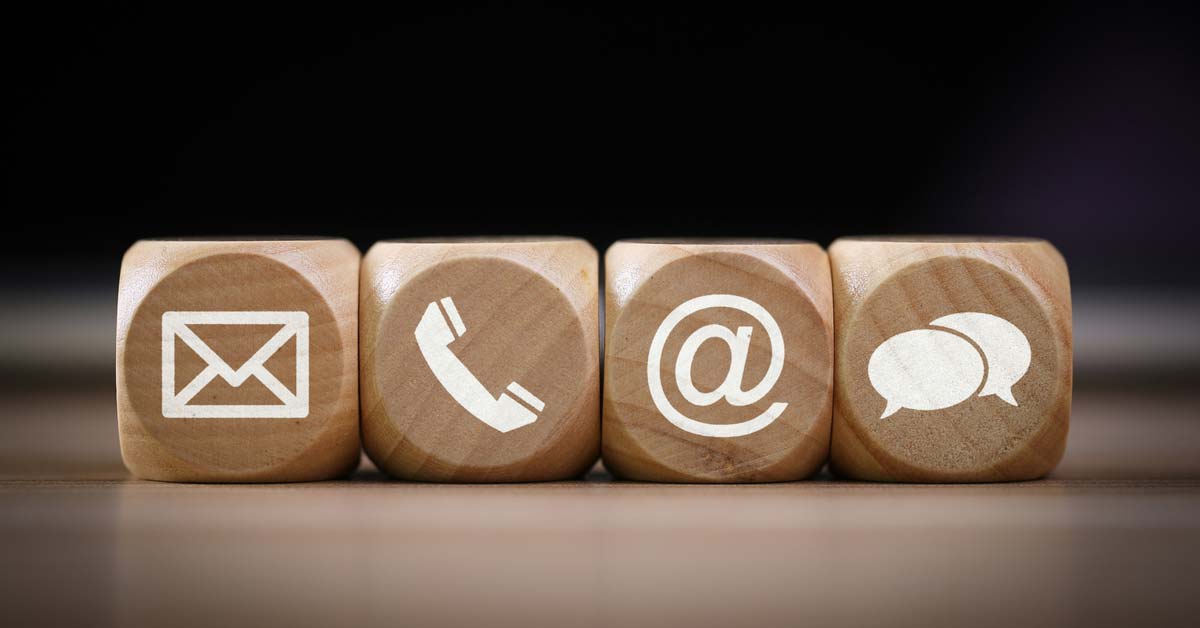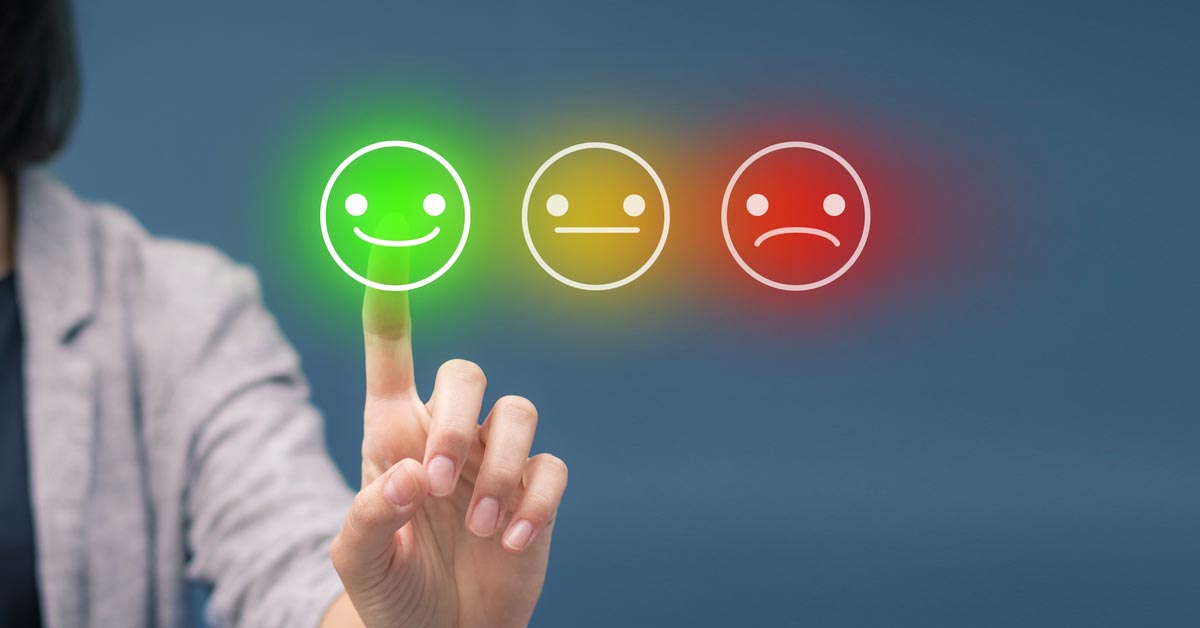What do you call an operation that provides customer service? A call center? Or a contact center? Many people refer to everything as call centers, similar to how some refer to all facial tissue as Kleenex and all soda as Coke. But, just like Coke doesn't aptly describe all soda flavors, referring to all customer service operations as call centers just isn't an adequate label. There are important differences between call centers and contact centers. While each are focused on delivering outstanding customer experiences (CX), they have different capabilities and approaches for how they do that, which also determines the true level of service they can provide.
What is a call center?
A call center is a customer service operation that provides sales and service support through inbound and/or outbound phone calls. This point is important to emphasize because it's the fundamental difference between call centers and contact centers. Call centers only offer phone support. They do not offer service via other channels like email, chat and social media.
Call centers are staffed with specially trained customer service agents who may work in a physical facility or at home. Inbound agents, those that accept incoming calls, can provide assistance in any number of areas ranging from account questions, to making hotel reservations, to completing a sale, to talking customers through how to assemble their new deck awning. Outbound agents are often focused on sales, collections, and fundraising.
Call centers have several support functions that assist with operations, including training, quality assurance, workforce management, and IT. This last group supports key call center technology such as the phone switch, the automatic call distributer (ACD), workforce management systems, and call recording software.
In addition to focusing on the customer experience, call centers have a variety of metrics that keep the operation on track. They typically measure how long customers wait to speak to an agent, how long calls take on average, if issues are resolved with the first call, and more. Additionally, call centers may survey customers to calculate customer satisfaction (CSAT) scores and Net Promoter Scores (NPS). Call centers are very data driven and there's no shortage of KPIs to measure.
What is a contact center?
By contrast, a contact center may provide phone support (most of them do), but they also support other channels. This could include any combination of chat/chatbot, text (SMS), email, social media, private messaging, and video. Contact centers who have integrated all of their channels are able to provide omnichannel experiences, meaning customers can move seamlessly across channels during the same interaction. If contact centers don't integrate their channels, they provide multichannel, as opposed to omnichannel, support.
Assuming a contact center handles phone calls, all the typical call center metrics, types of inquiries, etc., still apply. However, because they offer additional channels, contact centers also have additional metrics, technology, training needs, and more. Contact center agents can (and should) be trained to handle contacts from multiple channels, giving managers more staffing flexibility.
Why offer multiple support channels?
The simple answer: customers expect and value it. Just think about how you, your kids, or your friends interact with the world. You might make a phone call when you want to talk to your mom, post a picture on Facebook when you want to broadcast to large groups of friends, email your son's teacher about his history grade, and text your best friend about the great book you just finished. You choose the communication method that best suits the particular circumstance. This ability to choose how we communicate has become ingrained in us now.
People bring these now ingrained habits and preferences to their business relationships. When they interact with companies, they want to be able to choose a communication method that fits the urgency and nature of the issue. For urgent matters that don't require a lot of detail sharing, chat is a great solution. A customer who doesn't need an immediate resolution and wants to send pictures of a damaged product might choose to email the business. One-size-fits-all phone-only support is really not in sync with our modern society. Consumers still value phone customer service, but not everything requires a phone call, and sometimes a situation simply doesn’t allow a person to talk on the phone, so other methods of communication are desired. Simply stated, people want options.
The 2019 NICE CXone Customer Experience (CX) Transformation Benchmark confirms this desire for choice. The study found that agent-assisted methods are still preferred over self-service. However, usage within agent-assisted channels was split - for their most recent customer service interaction, 47% of survey respondents used phone, 32% used email and 22% used chat. Preferences are similarly divided. Phone support is still top dog but chat and email aren't far behind and they're gaining ground. But perhaps the most important statistic for this conversation is this - 90% of consumers say they are more willing to do business with companies that provide more ways to communicate.
Transforming call centers into contact centers
When organizations begin to evolve their call centers into contact centers, it's often part of a larger digital transformation strategy. Today’s competitive battlefield is customer experience and organizations are upgrading their customer service operations to meet consumer expectations for digital interactions and support. At the same time, businesses now recognize the important role call and contact centers play in delivering exceptional CX. Customer service contacts are a part of the customer journey that can increase loyalty…or increase churn. Given customer support's now elevated status, many businesses are making the infrastructure investments required to transform their call centers into contact centers. It's a significant undertaking and what follows are some of the areas that are included in the transformation.
17 specific differences between call centers and contact centers
When an organization begins offering multiple channels and transforms from a call center to a contact center, the decision impacts just about every aspect of the operation. Here are some examples.
Agent skills
Agents who support digital channels still need to have empathy, initiative and great problem-solving skills, just like their phone-only counterparts. But they need additional skills to support written and sometimes public communications. Plus, the asynchronous nature of channels like email and private social messaging might mean they have several contacts in process at the same time and therefore need the ability to multi-task, something their phone-only peers don't have to contend with. Here are some examples of additional skills contact center agents may need.
- Writing skills. Agents represent your brand, so everything they write needs to be professional and grammatically sound. Additionally, written responses should be concise and address all the customer's questions and concerns. Not only is this important for customer experience, but it can help eliminate costly back-and-forth communications caused by vague or incomplete responses.
- Social media etiquette. When agents are responding to Tweets or Facebook comments, they're putting information out there for all the world to see, so it needs to be solid, while avoiding strong commitments or guarantees. Agents need to know what they should say and how they should say it. And, they need to understand when to take communications private. A public social media blunder can have devastating consequences, so this is an important agent skill to focus on.
More info: Download our eBook, The Innovator's Guide to Social Customer Care, to learn more about providing social media customer service.
- Multi-tasking. A multi-skilled contact center agent might have four emails and five text message conversations in process, while also handling two simultaneous chat sessions. While these are not all “real time” conversations, being able to multi-task is critical to ensure customers don't fall through the cracks. Plus, being skilled at multi-tasking will alleviate some of the stress caused by not having immediate closure. Of course, good software tools help, too!
Core processes
- Hiring. Because contact center agents may be required to have additional skills, such as writing proficiency, hiring practices need to be altered. This may include modifying agent profiles, screening tools, and even recruiting methods. Some skills can be taught, but contact centers aren't in the business of teaching grammar, spelling, and punctuation, so it makes more sense to hire decent writers who will also make good agents.
- Training. On the flip side, some new skills, like social media etiquette, can be taught. This means curriculum needs to be developed, trainers brought up to speed, and more hours approved for agent training. Additionally, agents need training on how to operate any new software they will be using to support the new channels. Having well trained agents is critical to the success of your transformation.
More info: For ideas about teaching people to multi-task, read our blog post, Training Contact Center Agents to Multitask.
- Quality management. Most call centers have quality management (QM) programs to assess how agents are handling calls and coach them to better performance. Contact centers have expanded QM processes that accommodate the additional contact types. This often involves screen recording in addition to voice recording, additional evaluation forms, multi-skilling quality analysts, and modifying or creating new reports.
- Forecasting. Forecasting is the process of predicting future contact volume, typically based on historical data. It's a complex task that has significant implications for customer experience and labor cost management. Adding channels adds even more complexity to the process and requires contact centers to adjust their forecasting method so that they can plan for handling the additional workload from the new channels. Because most digital channels are asynchronous (responses are often not expected immediately and interactions don’t happen in real-time) forecasting must account for delayed responses and a different way of communicating with customers.
- Scheduling. Agent scheduling in contact centers can also be more complicated, especially if they are using multi-skilled agents who will be handling multiple channels during their shifts. This requires schedulers to include factors like how many emails or text conversations each agent is able to have in process at one time. This will ensure an optimal level of staffing in which customers’ needs will be handled timely, competently, and cost-effectively.
More info: Our blog post, Workforce Management Basics in Today’s Contact Center: Part 1, provides more information about forecasting and scheduling.
- Compliance. Call centers need to understand and abide by compliance requirements, especially if they support certain industries, take credit card information, or record phone conversations. Because contact centers will have agents supporting channels like email and chat, where they will be putting things in writing, managers need to think through how, for example, to capture and store transcripts of digital interactions. This also has implications for agent training.
Technology
When an operation supports digital channels, naturally they need software to receive, route, respond to, and report on those digital contacts. Contact centers may also implement tools to automate some of the core processes, such as forecasting and scheduling, that have become more complex with the addition of more channels. Below is a discussion of possible technology differences between call centers and contact centers.
- Omnichannel routing. To effectively provide omnichannel support, contact centers should have omnichannel routing.Omnichannel routing looks at all incoming contacts from all channels, organizes them in universal queue, and then routes them according to user-defined rules. This ensures, for example, that real-time chats and phone calls are prioritized and routed ahead of asynchronous contacts like social media. This task is often handled by an automatic contact distributor (ACD).
- Workforce management software. When performing the complex forecasting and scheduling tasks discussed above, it helps to have workforce management software that supports omnichannel planning. This means the application can accommodate factors like multiple channels and multi-skilled agents, ultimately ensuring that all contacts from all channels will have the right agents hired and scheduled to handle them.
- Agent desktop. Agents need different tools when they support additional channels. The best solution is an integrated desktop that includes a unified inbox. This puts everything in one place for agents and helps ensure contacts don't fall through the cracks. It’s also good for agent experience.Additionally, this unified desktop should incorporate access to unified analytics, workforce and quality software, scheduling applications, coaching and training, performance management, and more.
More info: Learn more about our agent desktop solution by watching the demo video - Increase Agent Productivity with MAX – My Agent eXperience.
- Reporting and analytics. Of course, contact centers will need information about how their digital channels are performing. Ideally, they'll get it from consolidated reporting and analytics software that provides a holistic view of the operation's performance, allowing for better decision making.
Key performance indicators (KPIs)
Another difference between call centers and contact centers is the KPIs they measure. If they handle phone calls, contact centers likely monitor all the stats that call centers do. However, they have to expand their KPIs to include metrics about their other channels. This may include standard call metrics with a digital flare, or completely new metrics that reflect the uniqueness of digital channels.
- Same metric, but digital. Call centers measure many things about phone calls and customer satisfaction. Contact centers often expand these to include digital channels, which makes comparisons easier and shortens the learning curve. These expanded measures may include:
- Volume by channel
- First contact resolution by channel
- Cost per contact by channel
- Quality scores by channel
- Customer satisfaction by channel
- Available contacts by channel
- Unique to digital. Not all call metrics can be tweaked to fit digital contacts because they just don't apply. For example, you can't measure the abandon rate of Tweets and emails don't necessarily have an average speed of answer (ASA) but more a targeted response timeframe, ie reply within 24 hours, and a measure against success of that target. On the flip side, digital contacts have some unique characteristics that need their own measurements. For example, managers need to be able to monitor how much work is in process for asynchronous channels like private social messaging and email.
More info: Watch City Furniture Uses CXone Metrics, Visibility to Boost Performance to see how one of our clients found success.
Outcomes
But what about differences in outcomes? Isn't that what it's all about? Indeed. Contact centers exist because organizations want to meet their customers' demands for more channel choice. We would expect to see a bump in customer satisfaction, but there are also implications for agent satisfaction. Below is a discussion.
- Customer experience and satisfaction. We've already established the case for choice - 90% of consumers said they are more likely to do business with companies that provide more ways to communicate. Let's look at more statistics from our recent benchmark study.
- Phone and chat tied for channels with the highest satisfaction scores (48% of consumers gave them a 9 or 10).
- Private social messaging app had the top Net Promoter Score (21) followed by conversation AI IVR (17) and phone (14).
- 93% of consumers expect organizations to provide a seamless experience when moving across channels (omnichannel).
- 73% of consumers gave businesses a "poor" rating for allowing them to seamlessly switch channels (omnichannel).
While it's hard to say that contact centers definitely provide better CX than call centers, it is clear that consumers like digital channels. Additionally, it's also clear that organizations need to direct more effort towards delivering the omnichannel experiences customers expect.
- Agent experience and satisfaction. The agent experience in contact centers will be different for those agents that are multi-skilled, but whether it's better or worse than in call centers really depends on how the contact center executes. For example, if agents have to constantly toggle through multiple systems or if they don't feel comfortable handling certain channels, their satisfaction may be lower. On the other hand, if agents like multi-tasking and are provided with state-of-the-art the art tools, satisfaction can soar.
These are some of the more significant differences between call centers and contact centers. Driven by the additional channels they support, contact centers have different capabilities and the infrastructure and processes to support them. Contact centers aren't necessarily better than call centers, but the fact that they offer digital channels does position organizations to better compete in the experience economy.
Bringing digital efforts together
One more parting thought - as organizations embrace digital service, sometimes pockets of support spring up outside of the contact center. For example, the marketing department might have responsibility for responding to Tweets. This can become an unintential a problem when they don't have access to the customer history and context that contact center agents do. There may be a legitimate reason for this division of duties, so instead of automatically transferring the responsibility to the contact center, leaders should consider providing other, relevant teams with contact center tools. This will ensure customers receive a consistent, informed experience regardless of the channel they use.
Additionally, when e-commerce teams develop mobile apps they need to design them to integrate with contact center software. Mobile apps often include self-service functionality, and if mobile app users start there and then switch to agent-assisted support, their information should transfer with them so they don't have to start from scratch with the agent. This supports the goal of providing true omnichannel experiences.
More information is just a click away
NICE, which provides industry leading cloud contact center software, has been helping clients successfully transition their call centers into contact centers for years. To find out more, watch Contact Center Modernization: Moving Beyond Phone Calls. And then watch Digital-First Customer Service: The Future is Here Today to hear further insights about the drivers to offer digital customer service.








